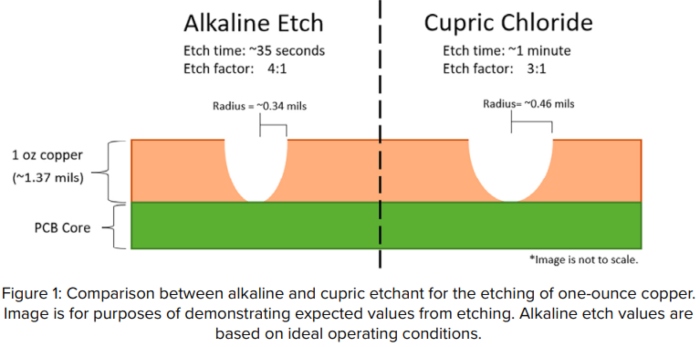Chemical etching is a versatile and precise manufacturing process used in various industries, such as electronics, aerospace, and automotive. It involves selectively removing material from a substrate using chemical solutions, or etchants, to create intricate and accurate designs. In this article, we will explore several commonly used etchants, their applications, and provide a step-by-step guide for setting the temperature, concentration, and other parameters when injecting an etchant into an etching machine.
Commonly Used Etchants
1. Ferric Chloride (FeCl3)
Applications:
- Printed Circuit Boards (PCBs): Ferric chloride is widely used to etch copper traces on PCBs, creating the desired circuit patterns.
- Metal Craftsmanship: Artists and metalworkers use ferric chloride to etch intricate designs onto metal surfaces.
Setting Parameters:
- Temperature: Typically, the operating temperature for ferric chloride etching ranges from 35°C to 45°C (95°F to 113°F).
- Concentration: A common concentration is around 40-45% ferric chloride in water. Ensure a consistent mix for optimal results.
- Etching Time: Etching time can vary depending on the depth and complexity of the design but is typically in the range of 5-30 minutes.
- Agitation: Adequate agitation ensures even etching and prevents the buildup of byproducts. Use an agitating mechanism within the etching machine.
2. Nitric Acid (HNO3)
Applications:
- Stainless Steel: Nitric acid is used to etch stainless steel, making it useful in the manufacturing of medical instruments and aerospace components.
- Integrated Circuits (ICs): In semiconductor fabrication, nitric acid is employed to etch silicon wafers, creating microelectronic structures.
Setting Parameters:
- Temperature: Nitric acid etching is typically performed at lower temperatures, around 20°C to 30°C (68°F to 86°F).
- Concentration: Common concentrations range from 10-70% nitric acid, depending on the material and desired etching rate.
- Etching Time: Etching times can be as short as a few seconds for silicon wafers to several minutes for stainless steel.
- Safety: Nitric acid is highly corrosive and should be handled with extreme care. Always use appropriate safety equipment and a well-ventilated workspace.
3. Sodium Hydroxide (NaOH)
Applications:
- Silicon Dioxide (SiO2): Sodium hydroxide is used in the semiconductor industry to selectively etch silicon dioxide, allowing for the creation of microstructures.
- Glass Etching: Artists and glassmakers use sodium hydroxide for glass etching to create decorative patterns.
Setting Parameters:
- Temperature: Typically, sodium hydroxide etching is performed at elevated temperatures, ranging from 80°C to 90°C (176°F to 194°F).
- Concentration: Concentrations vary but are often in the range of 5-20% sodium hydroxide.
- Etching Time: Etching times can vary from a few minutes to several hours, depending on the desired depth and precision.
Setting Parameters in an Etching Machine
To ensure the successful operation of an etching machine, it is crucial to set the parameters correctly. Let’s use the example of etching a copper PCB with ferric chloride:
- Temperature: Check the machine’s temperature control settings and set it to the desired range of 35°C to 45°C for ferric chloride etching.
- Concentration: Prepare the etchant solution by measuring the correct amount of ferric chloride and mixing it with water to achieve the desired concentration (e.g., 40-45%). Use a calibrated measurement system to ensure accuracy.
- Etching Time: Determine the appropriate etching time based on the complexity of your design. Start with a shorter time and gradually increase if needed. Typically, a 10-15 minute initial test run is a good starting point.
- Agitation: Ensure that the etching machine has an agitation system in place to keep the etchant solution well-mixed during the process. Proper agitation prevents uneven etching.
- Safety: Always follow safety protocols when working with chemicals. Wear appropriate personal protective equipment (PPE), such as gloves, goggles, and lab coats. Ensure that the workspace is well-ventilated and equipped with safety showers and eyewash stations.
- Waste Disposal: Dispose of the used etchant solution properly in accordance with local regulations. Many etchants are hazardous waste and must be treated accordingly.
In conclusion, chemical etching is a precise and versatile manufacturing process used in various industries. Understanding the properties and applications of common etchants, as well as properly setting parameters in an etching machine, is essential for achieving high-quality results while ensuring safety and environmental compliance. Whether you’re creating intricate PCBs or crafting artistic designs on metal and glass, chemical etching offers a powerful tool for precise material removal.








